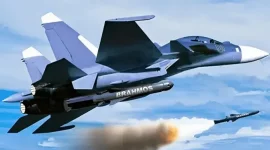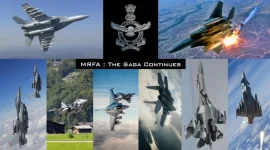- Views: 1K
- Replies: 5
The Indian Air Force (IAF) is proactively enhancing the defences of its critical force multiplier aircraft, such as Airborne Warning and Control Systems (AWACS) and in-flight refuelling tankers, to counter the growing threat of surface-to-air missiles (SAMs).
These high-value assets, crucial for extending operational range and enhancing situational awareness, are increasingly vulnerable to advanced SAMs, including MANPADS (man-portable air-defence systems), laser-guided threats, and radar-guided missiles.
To mitigate these risks, the IAF is exploring the integration of sophisticated Airborne Missile Protection Systems (AMPS). These systems are designed to detect, verify, and neutralize incoming missile threats in real-time using a combination of countermeasures, including flares, chaff, and Directional Infrared Countermeasures (DIRCM).
DIRCM technology is a game-changer in aircraft defence. It utilizes advanced infrared lasers to disrupt the guidance systems of incoming missiles with infrared seekers, effectively "blinding" them and rendering them harmless.
This capability complements existing missile warning systems and countermeasure dispensers already present on many IAF platforms, providing an additional layer of protection against modern missile threats.
The IAF is likely to collaborate with the DRDO to develop these systems indigenously. Future iterations of force multiplier platforms are expected to feature integrated missile warning systems with flares and chaff dispensers as standard, along with advanced AMPS for comprehensive protection. The IAF is also exploring ways to counter air-to-air missiles with infrared seekers, which pose a growing threat during air combat operations.
By integrating these advanced defensive systems, the IAF aims to ensure the operational security of its force multipliers in hostile environments, safeguarding their critical roles in reconnaissance, command and control, and aerial refuelling. Enhanced protection measures would allow these aircraft to operate closer to contested zones, providing greater flexibility and tactical advantage during missions.




